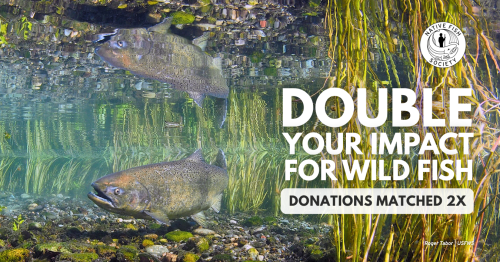The Unsustainable Status Quo in ODFW Budget Allocations
This is the second in a series of posts examining ODFW funding challenges and Native Fish Society's recommendations for reform. Check out our last post about ODFW Funding Reform, and keep an eye out our next post examining the case of Rock Creek Hatchery as an illustration of current challenges. All of the posts in this ongoing series can be found at this link.
In our testimony to the Oregon Legislature this session, Native Fish Society has emphasized that ODFW's budget is disproportionately allocated towards hatchery fish production, a model that has proven to be both financially and ecologically unsustainable over time.
Examining the Budget Imbalance
The current budget allocation reflects a concerning imbalance that threatens the agency's ability to fulfill its core mission of conserving and enhancing Oregon's fish and wildlife resources. Hatchery management costs—those expenses related to propagating and rearing fish, not the expenses of maintaining the hatchery facility infrastructure—are nearly equal to the entire budget of the ODFW Wildlife Division. Spending on hatchery programs and infrastructure combined comprises nearly 20% of the department's entire budget.
Perhaps most concerning is that conservation and recovery efforts within the agency's inland fisheries division receive a much smaller slice of the budget pie. This stark disparity reveals a fundamental misalignment between funding and the agency's core conservation responsibilities.
The Economics of Hatchery Production
The recent economic analysis conducted as part of ODFW's hatchery facility assessment revealed troubling disparities in the cost-effectiveness of various hatchery programs. While producing resident trout costs approximately $6.21 per trout harvested, producing summer steelhead can cost up to $438 per steelhead harvested—a difference that raises serious questions about how limited resources are being allocated.
These economic realities are compounded by the ecological impacts of hatchery production. After a century of widespread hatchery fish releases, many wild populations have declined to the point of being listed under state and federal regulations as threatened or endangered. The current approach has created a paradoxical situation: substantial investments in hatchery production coinciding with collapsing wild fish populations and increasingly restricted harvest opportunities on both wild and hatchery fish.
As ODFW and the legislature consider funding mechanisms for the coming biennium, these economic and ecological realities demand a more strategic approach to budget allocation—one that considers both financial sustainability and conservation outcomes. The stark difference in return on investment and impacts on wild populations between various programs highlights the need for prioritization and reform rather than simply maintaining the status quo.

